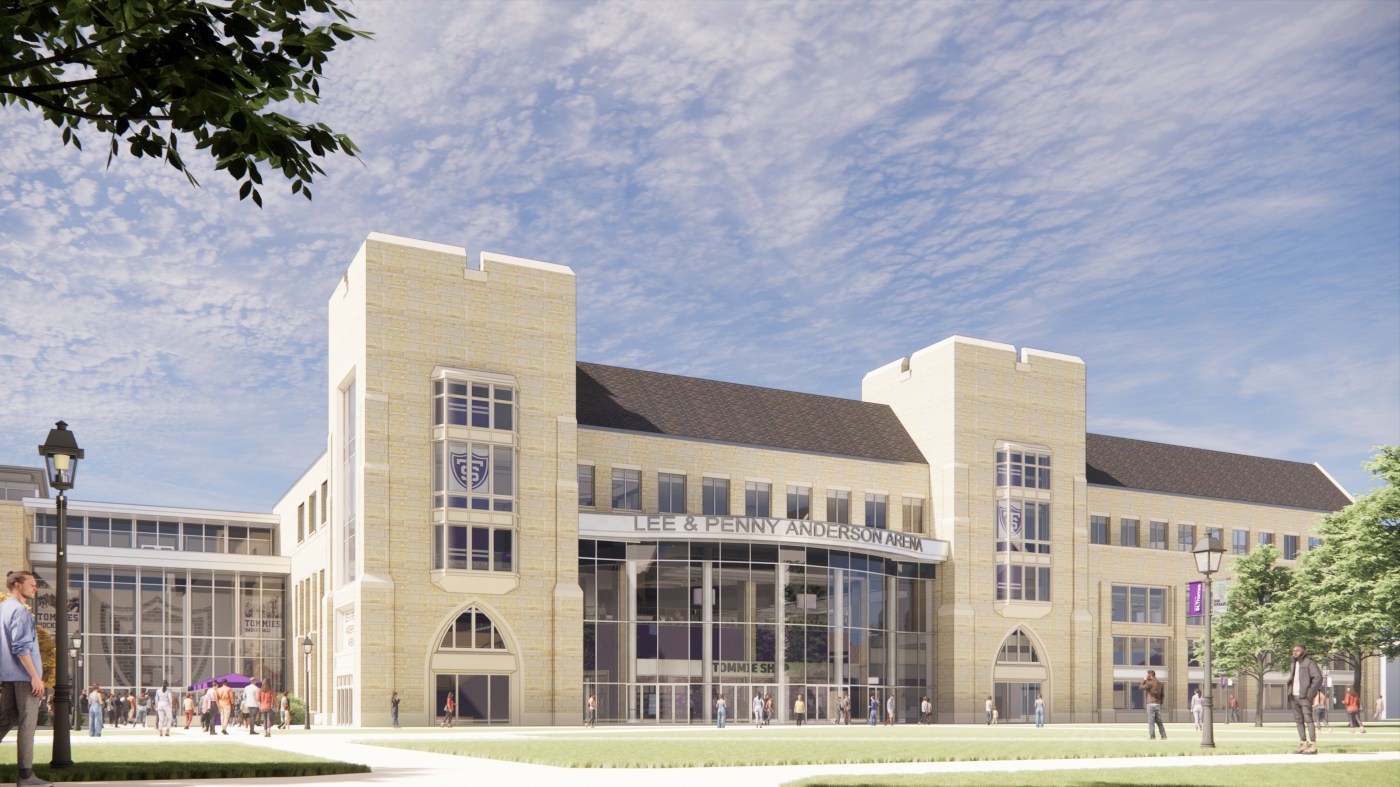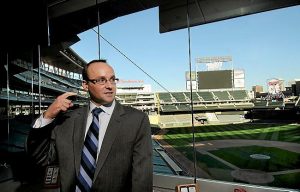
St. Paul updates University of St. Thomas arena findings in face of legal pressure
Under pressure from a citizens’ group and a negative legal decision from the Minnesota Court of Appeals, the city of St. Paul has published an updated Environmental Assessment Worksheet related to a future Division 1 hockey and basketball arena already under construction at the University of St. Thomas.
The newly updated EAW, which is 464 pages, was prepared for the city by the St. Paul-based planning and engineering firm Kimley-Horn.
It can be accessed on the city’s website at stpaul.gov/StThomasArena_EAW. The city will accept public comments through 4 p.m. on Nov. 7.
On June 8, the Court of Appeals determined that the city had prematurely adopted the findings of its EAW without considering the cumulative impacts of other construction projects on campus, including the new Schoenecker Center, which is located next to the arena and hosts a recital hall. Also included in the new EAW is commentary on a proposed Microgrid Research Center, which could soon be built in place of an existing greenhouse and a portion of the Owens Science Hall.
Additional court findings
In addition, the St. Paul Seminary, located north and west of the university’s south campus, plans to construct 73 units of surface parking, most of it located within a new parking lot along Mississippi River Boulevard.
The court also found that the arena’s approved EAW largely failed to include active mitigation measures for traffic, parking and greenhouse gas emissions beyond passive approaches such as monitoring traffic levels for two years.
The Lee and Penny Anderson Arena is expected to host 4,000 to 5,500 spectators on a 6-acre site on the south campus near Cretin and Grand avenues in St. Paul. The project is expected to include practice facilities, coaching offices, locker rooms and student athlete support services. In addition to men’s and women’s D1 games, it will host university events such as commencement ceremonies, academic convocations, speakers and career fairs.
Within the EAQ, consultants point out that the Minnesota Department of Transportation’s screening method for carbon emissions demonstrates that intersections with total daily traffic volumes below 82,300 vehicles per day do not have the potential for causing excessive air pollution problems.
“None of the intersections in the vicinity of the project site exceed the criteria that would lead to a violation of the air quality standards,” reads the report.
Traffic, parking mitigation
The EAW also spells out event-day traffic mitigation measures that St. Thomas is expected to employ, including traffic control officers at Cretin Avenue/Grand Avenue or Cretin Avenue/Summit Avenue, event-specific signal timing at certain signalized intersections, assigned parking attendants at designated event parking facilities, and designated pedestrian routes and wayfinding campus-wide.
The EAW also makes notes of planned sidewalk closures and pedestrian wayfinding along Grand Avenue near the arena, and the possibility of creating an alternative access to the arena by skyway or another vertical circulation, if necessary and “event operations/pedestrian conflicts are determined to be problematic by the city.”
The EAW also notes that the university is exploring additional strategies, such as pre-paid event tickets that include assigned parking locations, ramp restrictions, restaurant shuttles and free transit passes issued with tickets.
Still, “even with the mitigation measures, maximum basketball events are expected to have a parking deficit of 200 to 300 vehicles on a weeknight,” reads the EAW. “Note: these games are expected to only occur once or twice a year, if at all.”
The report finds that for attendance over 4,350 spectators on a weeknight, or 4,775 on a Friday night, or 5,200 on a weekend — when parking deficits are expected even with parking mitigation — “it is recommended that UST provides off-site parking and shuttle services to address the parking deficit. UST has had preliminary discussions with Allianz Field to utilize their parking lot for shuttle services, which has sufficient available parking to accommodate the deficits, although further evaluation of the details is needed through the event management plan.”
Related Articles
Wisconsin man sentenced for role in St. Paul man’s dismemberment
St. Paul’s historic Highland Park Water Tower to open for visitors this weekend
Ramsey County approves $1.2 million county retiree Medicare Advantage supplement; St. Paul School District votes tonight
Tom Horner: Why this former Republican operative is voting for Harris/Walz
Ice Castles moving to the State Fairgrounds this year


